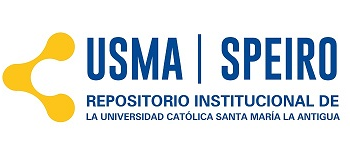Teorizando una ciudad más humana
DOI:
https://doi.org/10.37387/ipc.v8i2.149Keywords:
Theorize, city, human, ideal society, urban planningAbstract
In these times, theorizing about a more humane society inevitably implies theorizing about a more humane city. According to the United Nations, by 2030, the majority of the world population will live in urban centers, culminating the sustained process of urbanization that has characterized the history of humanity for the last 200 years (UN-HABITAT 2008, 4). Most of the challenges that humans face today - the environmental crisis, social inequalities, violence - will find their solution in the cities, or they will not find them at all. Successful partnerships will come true, fundamentally, in successful cities. The future of the world is an urban future (Ángel 2012). Theorizing the humanized city can, however, be as difficult as describing the ideal society. Fortunately, significant progress has been made on this issue recently and, in any case, the task is now inescapable. When I started my university studies in urban planning more than 20 years ago, I entered the classroom with great expectations about urban theory. He expected deep discussions about urban ills, the obvious crises of urban planning, and the most enlightened solutions to these problems. To my surprise (and deep disappointment) the theory courses in urban planning schools in those years were mostly about process theory, that is, about the planning process, and not about its object (the city). For example, models of action and decision-making were discussed among diverse social actors, such as the “rational” model, the “incremental” model, or “strategic” planning (see, for example, the chapter on theory in Levy 1988). In the first case, the process began with the “definition of the problem”, to then go on to elaborate objectives, goals, projections, alternatives and, eventually, a plan. The incremental model was less pretentious, and stemmed from the fact that the problems are not always well defined, and the solutions much less, so it was convenient to advance on some promising problem, to then trigger changes in others. Strategic planning was similar in its pragmatism. It was based on the famous SWOT analysis (strengths, opportunities, weaknesses and threats), to then develop an action plan more in line with reality.
Downloads
Published
How to Cite
Issue
Section
License
1. The authors preserves the patrimonial rights (copyright) of the published works, and favors and allows their reuse.
2. The journal (and its contents) use Creative Commons licenses, specifically the CC BY NC SA type, where: "the beneficiary of the license has the right to copy, distribute, display and represent the work and make derivative works provided you acknowledge and cite the work in the manner specified by the author or licensor."
3. They can be copied, used, disseminated, transmitted and exhibited publicly, provided that: i) the authorship and the original source of its publication (magazine, publisher and URL, DOI of the work) are cited; ii) are not used for commercial purposes.
4. Conditions of self-archiving. Authors are encouraged to electronically disseminate the post-print versions (version evaluated and accepted for publication), as it favors their circulation and dissemination, increases their citation and reach among the academic community.











